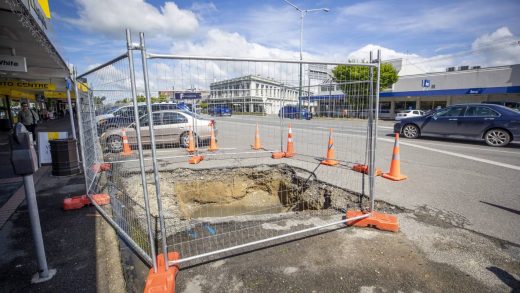
Nearly all eastern and southern lowland areas of the South Island will have an “effective temperature” between -5C and -10C around 1am Thursday, Niwa Weather is forecasting.
The effective temperature includes factors that contribute to how the temperature feels to a warm bodied creature. So along with the normal air temperature, that can also include wind chill and humidity.
A pulse of freezing air is due to spread over the country in the next two days, starting from the south on Tuesday evening. It brings with it the chance of heavy snowfalls to sea level in some parts of the South Island, and the possibility of some snowfalls in the lower North Island.
Niwa principal scientist – forecasting and media Chris Brandolino said the effective temperatures being predicted for the South Island would be noteworthy even in mid-July, let alone in October.
READ MORE:
* Cool start with some frosts ahead of Antarctic blast
* ‘Winter is back’: South Island highway reopens after cold snap brought snow
* Christchurch wakes to -4.5C as cold snap settles in across the country
Updated weather warnings from MetService on Tuesday morning included the possibility snow could even be heavy to near sea level in much of the east and south of the South Island later on Wednesday and possibly into Thursday.
Niwa
Niwa’s forecast of the “effective temperature” – essentially actual temperature and wind speed – at 1am Thursday
Snow could also lower to 300m around Wellington on Wednesday night.
MetService was forecasting snow could lower to 200m in the south on Tuesday night It could fall to 200m in the north of the South Island, and to sea level from Canterbury southwards, during Wednesday.
Peter Meecham/Stuff
Snow in Springfield, inland Canterbury, in August. An unseasonal cold snap in the next few days could bring more snow to low levels in much of the South Island and lower North Island.
There was a chance the “intense cold outbreak” could bring heavy snow above 400m overnight, or above 600m in the deep south, to much of the east of the South Island.
Christchurch is expected to have a fine Tuesday after the frosty start, with a high of 20C. That all changes with an overnight southerly change, and on Wednesday and Thursday daytime highs of just 10C are expected, with an early Thursday low of -1C.
MetService is forecasting the temperature will drop to -3C in Alexandra early Thursday.
Southerlies are forecast to arrive in Wellington late morning Wednesday, with snow possible to 200m from evening, with the temperature dropping to 2C early Thursday – which would equal it’s second-lowest October temperature – and only getting to 8C later that day.
MetService metrologist Angus Hines described the air as “taking a direct line from the Antarctic ice sheet to the South Island”, bringing with it strong winds, snow and bitterly cold temperatures.
Those conditions could stress livestock, while frosts could damage newly planted crops. There was also the possibility of seven-metre waves around coastal parts of Southland on Wednesday night.
Many South Island roads are likely to be affected and possibly closed, as well as some roads over the lower and central North Island.
Brandolino predicted there could be “sleety, snow-mixed flakes” in Wellington on Thursday morning – probably in the hilly suburbs, but possibly at sea level.
MetService was predicting record-setting temperatures that day for some parts of the country. Masterton, for instance, is looking at a high of 7C on Thursday – the lowest October high ever so far recorded is 8.4C. Invercargill is forecast for a 6C high, the lowest high on record for the month is 5.8C.
NIWA/Supplied
A Niwa graphic shows a blast of cold air from Antarctica moving up Aotearoa, covering the whole country by Thursday.
Blenheim was forecast to have a low of -2C, the equal fourth-coldest October temperature. It would only need to undershoot that projection by a half a degree to become the third-coldest October day.
Even areas that don’t get snow will notice a drop in temperature. Hamilton started the week at 18C but would drop to a high of 12C on Thursday, with a sub-zero overnight minimum.
It was previously reported that there had not been October snow in Christchurch for over 50 years – however, MetService walked back that statement, clarifying that data for two decades was incomplete.
“It’s certainly very uncommon. It is possible that it happened during those incomplete years, but it hasn’t happened much,” Hines said.
Conditions were expected to ease on Friday, giving way to a sunny weekend for most parts of the country.
“Even when the rainy and snowy weather clears, the overnight temperatures are still going to be really cold.”


